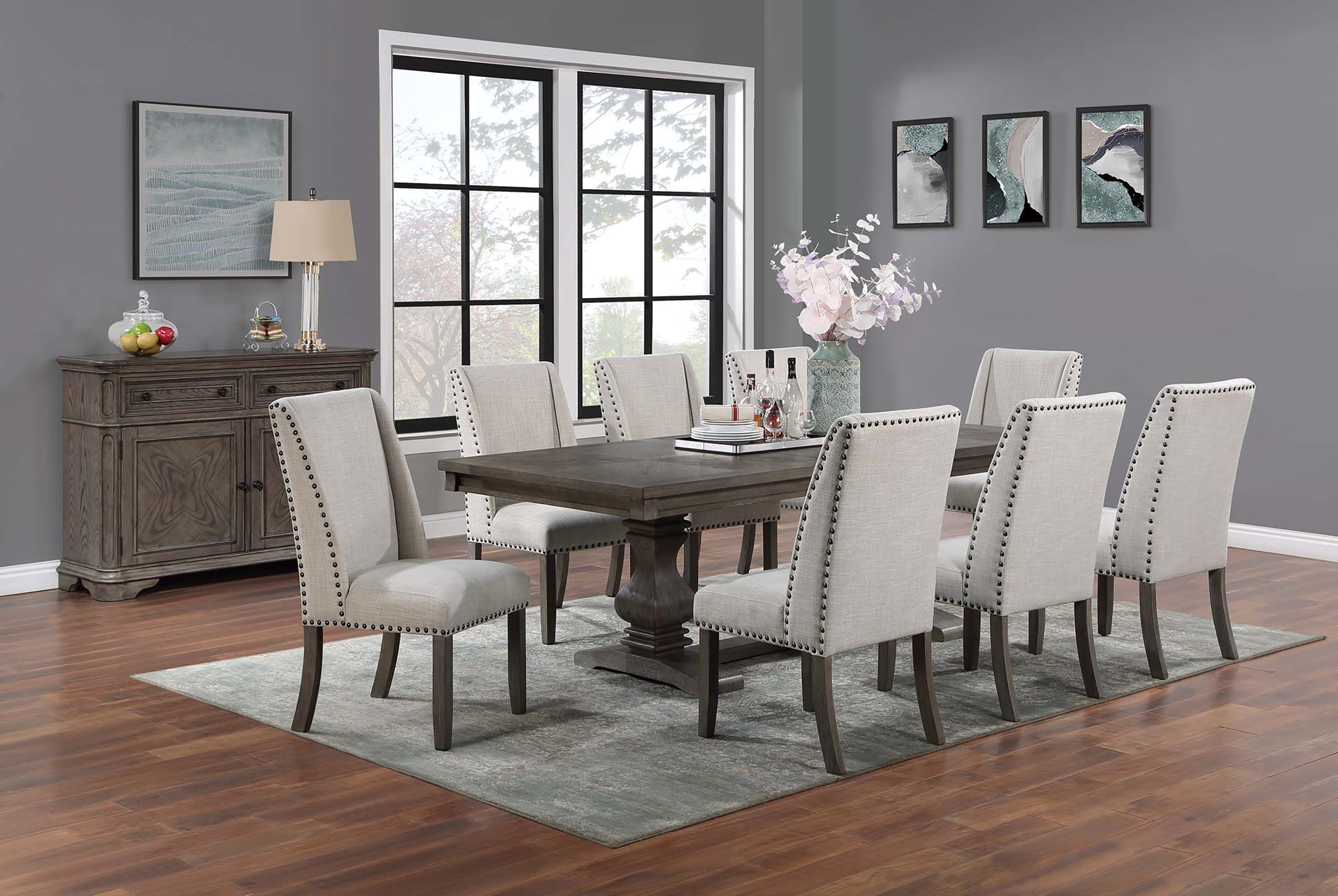A formal dining room is a place where special memories are made, whether it's holiday gatherings, celebratory dinners, or family events. The centerpiece of any dining room is the table, which sets the tone for both the space and the occasions that will take place around it. If you are considering adding a new piece to your home or upgrading your current one, finding the perfect dining room table is essential to create the right atmosphere.
Key Factors to Consider When Choosing a Dining Room Table
1. Size and Shape
Before purchasing a formal dining room table, it's important to assess the size of your dining area. The table should comfortably fit within the space without overcrowding it. Measure the dimensions of your room and leave ample space for chairs and movement. As a general rule, leave at least 36 inches between the edge of the table and the walls to ensure comfort.

When it comes to shape, there are several options to consider:
- Rectangular tables are a popular choice for formal dining rooms. They offer ample seating and work well in longer rooms.
- Round tables are ideal for smaller spaces or more intimate settings. They encourage conversation and can fit more easily in square rooms.
- Oval tables offer the benefits of both round and rectangular tables, providing more seating while keeping a softer, more inviting shape.
- Square tables are great for smaller, more modern spaces, but may limit seating capacity.
2. Material and Durability
- Wood: A classic choice for formal dining rooms, wood tables add warmth and timeless elegance. Solid wood, such as oak, maple, or walnut, is durable and can be refinished if needed. Wood tables can be rustic, traditional, or modern, depending on the finish and design.
- Glass: Glass dining tables are sleek and modern, making them a great choice for contemporary dining rooms. They're easy to clean and create an open, airy feel, but they can be less durable than wood and more prone to scratches.
- Metal: For a more industrial or modern look, metal dining tables can be a bold statement. They're incredibly durable and often paired with glass or wood tops.
- Marble: Marble tables add luxury and sophistication to any space. They are durable but require regular maintenance to keep them looking their best. Marble is a timeless material that can complement traditional and contemporary designs alike.
3. Style and Design
- Traditional: A traditional table is typically made of wood and features intricate carvings, detailed legs, and rich finishes. This style is perfect for those who want a classic, formal look.
- Contemporary: Contemporary dining tables often feature clean lines, minimalistic designs, and modern materials such as glass or metal. These tables are perfect for homes with a modern or industrial interior design.
- Rustic: If you love the charm of natural wood, rustic dining tables are a great choice. These tables often feature distressed finishes and thick wooden tops, offering a warm, inviting look.
- Transitional: A transitional table combines elements of both traditional and contemporary styles, making it a versatile option for many different interiors. This style is known for its balanced and timeless look.
4. Seating Capacity
When selecting a formal dining room table, consider how many people you typically host. A table that seats four may be sufficient for a small family, but if you frequently host large gatherings or dinner parties, you'll want to opt for a table that accommodates six to eight people. Some tables come with extendable features, allowing you to adjust the size to suit your needs.
It's also important to choose the right chairs for your table. Ensure that the chairs are comfortable and complement the design of the table. Dining chairs should have enough space between them so that guests can sit comfortably and move around without feeling cramped.
5. Color and Finish
The color of your dining room table will influence the room's overall tone. Lighter wood finishes, such as oak or maple, create a bright, airy atmosphere, while darker wood tones like walnut or mahogany add richness and elegance. For a more modern look, consider a black, white, or gray finish that complements contemporary décor.
It's essential that the color of the table works with the rest of your dining room furniture and color scheme. A table with a neutral finish can easily blend into any style, while a more bold or unique color can serve as a statement piece in your dining room.
Conclusion
Choosing the right formal dining room table is about more than just finding something to eat on; it's about selecting a piece that will bring your dining room together and elevate the space. With the right table, you can create an environment that is welcoming, functional, and beautiful. Whether you prefer a traditional wooden table or a sleek modern design, there is a dining room table out there to suit your style and needs. Take the time to consider size, material, style, and seating capacity to ensure that your new table not only looks great but also serves as a practical centerpiece for many years of memorable gatherings.






